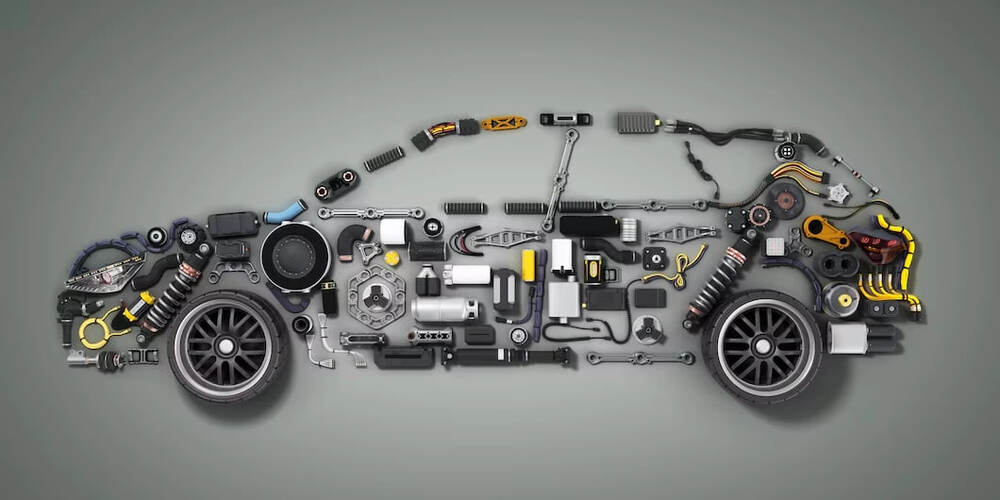The Ultimate Guide to Parts of a Car Inside. A car’s interior is more than just seats and a steering wheel—it’s a living, breathing ecosystem of comfort, technology, safety, and style. Whether behind the wheel or riding a shotgun, understanding what’s happening inside your car gives you a deeper appreciation for the engineering marvel you’re traveling in.
Why Knowing the Parts of a Car Inside Matters
The Ultimate Guide to Parts of a Car Inside. Ignorance isn’t bliss when it comes to modern vehicles. Familiarity with the components inside your car not only boosts confidence but also saves money, enhances safety, and improves your overall driving experience. From spotting minor malfunctions before they snowball into major repairs to customizing your ride for maximum comfort, knowledge is your best co-pilot.
A Quick Glance at What’s Under the Hood (and Beyond)
The Ultimate Guide to Parts of a Car Inside. While the engine bay gets a lot of attention, the interior of your car is just as intricate. It’s where electrical, mechanical, and digital systems converge to create a smooth ride. Think of it as a cockpit—not just functional but intuitively designed to respond to your every move.
Driver’s Seat Features You Shouldn’t Ignore
The Ultimate Guide to Parts of a Car Inside. Power adjustments, lumbar support, seat memory, and heating/cooling—your seat is more like a throne. A poorly adjusted seat can lead to fatigue, poor posture, or even reduced reaction time. Comfort and control go hand in hand.
Passenger Perks: Seats, Storage, and Comfort Zones
Rear-seat amenities like recliners, charging ports, and climate zones are no longer exclusive to luxury models. Passengers can stretch out, stow their gear, and relax in style.
How the Center Console Became Command Central
Once a humble storage bin, the center console houses gear selectors, infotainment controls, wireless charging pads, and even coolers. It’s the tech nerve center of your ride.
The Secret Story Behind Your Car’s Cup Holders
It may seem trivial, but cup holders have become a design battleground. They must grip, adapt, and even accommodate boba-sized cups. Some even heat or cool your drink. Its functionality is disguised as convenience.
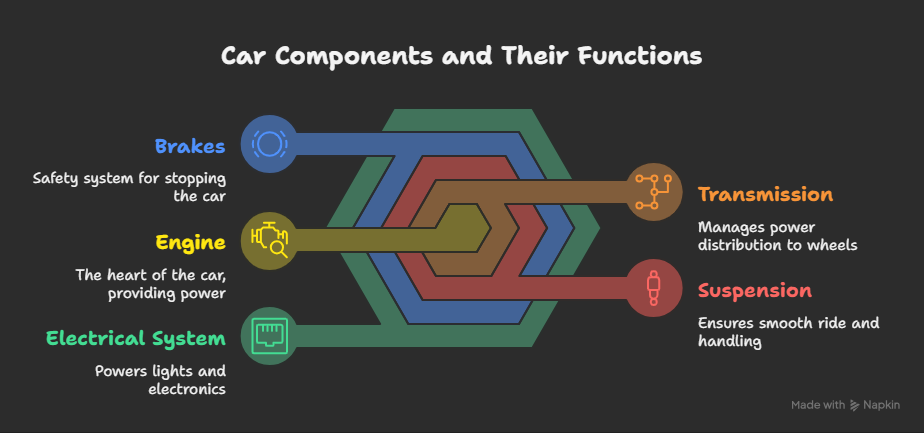
Speedometers, Odometers, and What They’re Telling You
These gauges do more than count miles and measure speed. Digital clusters can show tire pressure, fuel economy, engine health, and driving style analytics.
Warning Lights and What They’re Warning About
From the ominous check engine light to tire pressure alerts, these glowing icons are your car’s way of whispering (or screaming) for help. Don’t ignore them—they’re coded clues to your car’s well-being.
Infotainment Systems: More Than Just Music
Touchscreens now manage navigation, calls, apps, and sometimes even HVAC. Voice commands and haptic feedback keep eyes on the road and hands on the wheel.
Steering Into the Steering System
What’s Happening When You Turn the Wheel
Modern steering isn’t purely mechanical. Electric power steering systems adjust resistance based on speed and conditions, making parking effortless and highway driving steady.
Tilt, Telescopic, and Heated: The Evolution of Steering
Adjustable and heated steering wheels cater to ergonomics and luxury. Custom positioning reduces strain, while heating pads offer cozy winter commutes.
Pedal Power
Gas, Brake, and Clutch: Your Car’s Foot Controls Explained
They may seem basic, but throttle-by-wire and brake-assist systems have added layers of sophistication. Clutches are disappearing in favor of dual-clutch and CVT setups, changing how we interact with acceleration and deceleration.
Electronic Parking Brakes vs Traditional Handbrakes
In the grand scheme of automotive evolution, the battle between hand-pulled levers and fingertip-controlled buttons is a subtle yet symbolic shift. Electronic Parking Brakes vs Traditional Handbrakes isn’t just a question of form—it’s a statement about function, safety, and design philosophy.
Traditional handbrakes, with their mechanical clunk and reassuring resistance, offer a sense of connection. They’re intuitive, low-tech, and favored by enthusiasts for their tactile feedback—especially in performance driving or emergencies.
Electronic parking brakes, on the other hand, embody modern convenience. With just a light press, a compact motor silently secures the car in place. These systems often come bundled with hill-start assist, auto-hold features, and better cabin real estate, allowing for sleeker interior layouts. But for some, they lack soul—a sterile replacement for a once-interactive component.
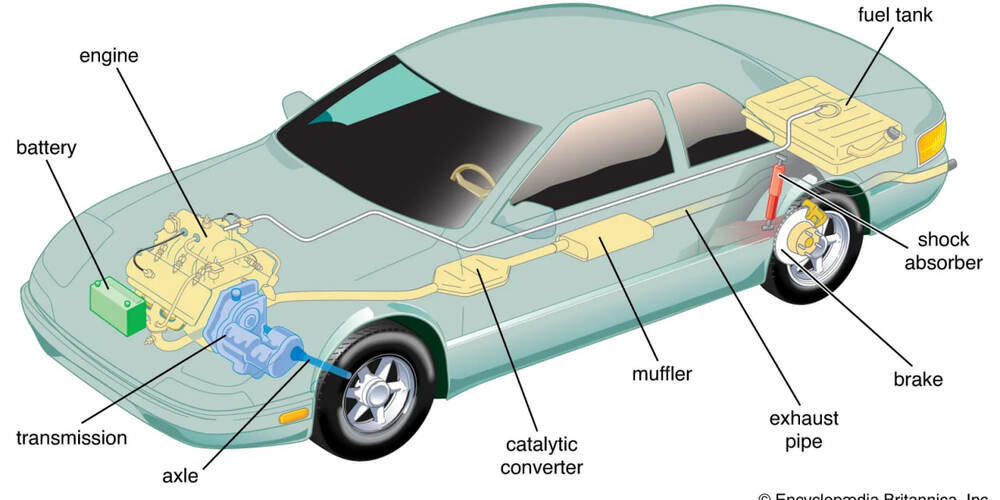
This transformation is one of many highlighted in The Ultimate Guide to Parts of a Car Inside, where digital refinement continues to redefine the driving experience. Whether you’re a fan of the old-school tug or the futuristic click, the evolution of the parking brake is a quiet revolution tucked right between your seat and the center console.
Climate Control Like a Pro
Compressors, condensers, and cabin air filters harmonize to keep things cool. Dual- and tri-zone systems let each occupant personalize their bubble of comfort.
Heated Seats and Steering: Luxury or Necessity?
On frigid mornings, heated interiors go from luxury to lifeline. Steering wheels with built-in heaters melt away stiffness and make early commutes bearable.
Lights, Mirrors and Visibility
Clarity on the road begins with more than eyesight—it starts with design. Lights, mirrors, and the delicate ballet between reflection and illumination make up an unsung symphony of safety and style. When calibrated with intention, they do more than a guide; they communicate.
Headlamps slice through the dark like precision tools, not merely lighting the way but sculpting it. Daytime running lights glow with quiet confidence, while adaptive beams pivot with purpose, responding to curves like a trusted co-pilot. Mirrors, meanwhile, aren’t just polished panes—they’re portals. Blind-spot monitors, integrated signals, auto-dimming magic. Visibility becomes dynamic, ever aware, ever adapting.
Inside the cabin, ambient lighting does more than decorate. It choreographs mood. It whispers comfort in cool blues and ignites energy in subtle reds. Every gleam, every glint, is considered.
In The Best Ultimate Guide to Parts of a Car Inside, this interplay takes center stage—where function meets form, and perception becomes protection. Because to truly see isn’t just about looking forward. It’s about knowing what surrounds you, from every reflective angle to every illuminated inch.
Interior Lights You Didn’t Know Had a Purpose
Ambient lighting isn’t just aesthetic—it enhances visibility without distraction. Courtesy lights illuminate footwells, consoles, and door handles, helping you find what you need without fumbling.
Rearview and Side Mirrors: More Than Meets the Eye
Blind spot indicators, auto-dimming features, and even integrated displays turn these mirrors into high-tech safety tools. Some cars now replace mirrors entirely with cameras.
Tech Time: Electrical and Connectivity Features
The cockpit has evolved. Buttons gave way to touchscreens, and now, a symphony of sensors, processors, and intelligent systems quietly orchestrate the modern driving experience. It’s no longer just a car—it’s an ecosystem on wheels.
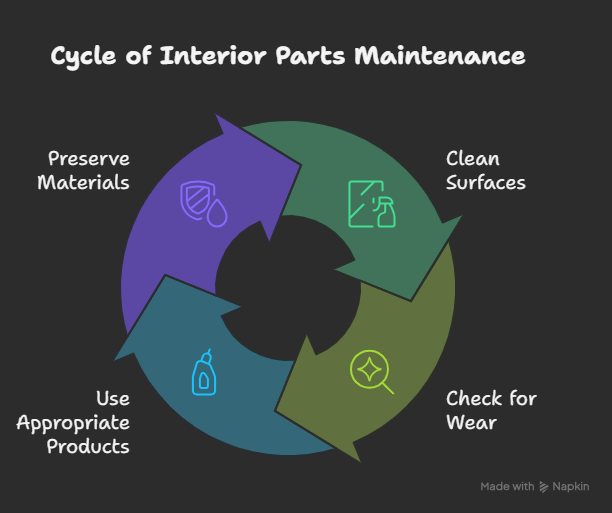
From wireless charging pads to biometric ignition, the electrical architecture within today’s vehicles does more than power—it predicts, adapts, and connects. USB-C ports line the cabin like arteries, pulsing with energy. Over-the-air updates whisper innovation into the dashboard while you sleep. Digital clusters morph with your mood, reconfiguring displays in a dance of data and design.
Connectivity is the new horsepower. Seamless smartphone integration, live traffic overlays, cloud-based voice assistants—it’s a dialogue between driver and machine. And when done right, it feels almost telepathic.
In The Best Ultimate Guide to Parts of a Car Inside, this domain is illuminated with nuance—showcasing how microchips and memory have become as critical as pistons and gears. Every feature, from ambient tech to advanced driver-assist systems, is meticulously woven into the driving narrative.
This is tech not for show but for soul. It simplifies, streamlines, and strengthens the bond between man and machine. Welcome to the era where intelligence
USB Ports, Chargers, and Hidden Power Sources
Power outlets are tucked into armrests, seatbacks, and even trunks. Wireless charging mats add a clutter-free bonus.
Bluetooth, Wi-Fi, and the Tech Behind Your Tunes
Your music stream travels through Bluetooth modules, DACs, and amplifiers before hitting the speakers. Some cars now function as rolling Wi-Fi hotspots.
Storage Spaces and Hidden Compartments
Glove Boxes, Armrests, and Their Secret Uses
Today’s storage is modular and sneaky. Deep bins, cooled glove compartments, and lockable sections cater to snacks and sensitive documents.
Trunk Tricks: Rear Seat Access and Folding Secrets
60/40 splits, ski pass-throughs, and underfloor compartments redefine utility. Some trunks even open with a foot swipe under the bumper.
Safety First: Protective Parts Inside the Cabin
Modern car cabins are more than just comfortable—they’re engineered sanctuaries. Every inch is designed to protect, absorb, and react when things go sideways. Safety isn’t just in the metal; it lives in the details you don’t always see.
Airbags are the silent guardians. They’re tucked away in steering wheels, dashboards, seats, and even the roofline, ready to deploy in milliseconds. Curtain airbags shield your head from side impacts, while knee airbags protect lower limbs often overlooked.
Seat belts remain the cornerstone. But today’s belts are smarter—with pre-tensioners that tighten instantly during a crash and force limiters that reduce impact to your chest. Anchored securely, they hold you steady like a harness in a rollercoaster.
Reinforced pillars and crumple zones do the invisible heavy lifting. These parts are shaped and positioned to manage energy during a collision, redirecting forces away from passengers.
Child seat anchors like ISOFIX and LATCH systems are now seamlessly built-in, making secure installation fast and foolproof.
For a closer look at how each of these components contributes to a safer ride, The Ultimate Guide to Parts of a Car Inside dives deep because real peace of mind starts before the wheels even turn.
Seat Belts: The Unsung Heroes of Everyday Drives
Pre-tensioners, force limiters, and adjustable anchors make today’s belts brighter than ever. It’s tech that’s been saving lives quietly for decades.
Under the Surface: Structural Interior Parts
The Car Floor and What Lies Beneath It
Insulation, wiring harnesses, and crash channels run just beneath your feet. It’s a sandwich of safety, soundproofing, and stability.
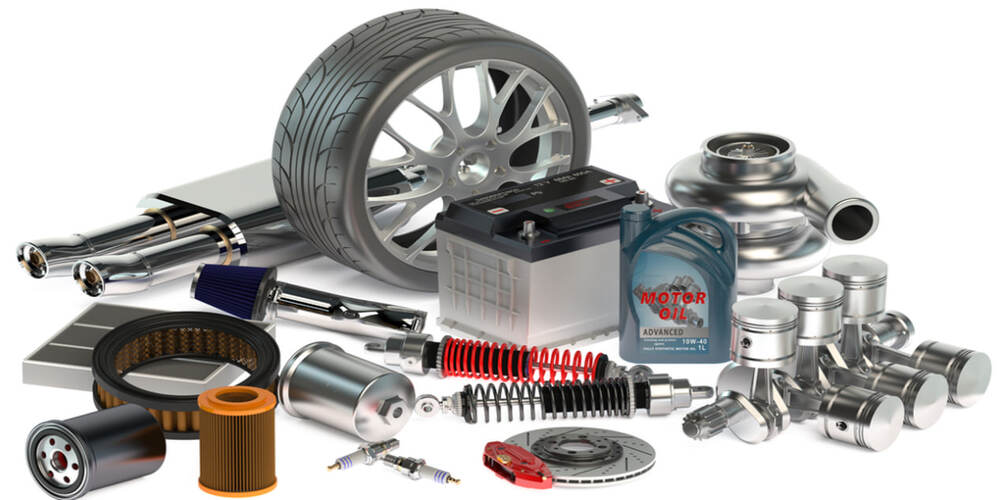
Roof Liners, Pillars, and Crash Protection Features
A-pillars are reinforced to prevent cabin collapse in a rollover. Roof liners hide sensors, airbags, and even mood lighting.
Behind the Panels: The Electrical Maze
Wires, Relays, and Modules That Make It All Work
Hundreds of meters of wiring thread through your car, governed by relays and control modules that handle everything from wipers to warning systems.
How Your Car Talks to Itself with Sensors and ECUs
From rain sensors to occupancy detectors, your car is a network of conversations between dozens of ECUs. This digital nervous system ensures everything runs in sync.
Child-Friendly Features
ISOFIX Anchors, Window Locks, and Family Comfort
Safety meets simplicity with ISOFIX points, rear sunshades, and power window child locks that prevent accidental mishaps.
Entertainment Systems for Little Passengers
Seatback screens, wireless headphones, and parental app control turn long trips into calm, connected journeys.
Interior Materials and Design
Step into any car today, and you’re stepping into a carefully curated blend of texture, tone, and tactile pleasure. From supple leather to vegan suede, the interior materials aren’t just about aesthetics—they’re about experience. Comfort, durability, and even climate-resilience come into play.
The dashboard might be cloaked in soft-touch polymers. Seats could be stitched from Nappa leather or eco-friendly alternatives made from recycled plastics. Alcantara, once reserved for high-end sports cars, now adds a touch of racing pedigree to everyday commuters. Even the humble headliner has evolved—now sound-dampening and stain-resistant.
Design plays its own game. Ambient lighting tucked beneath trims. Contrasting stitching that speaks louder than chrome. And yes, the choice between piano black or brushed aluminum can say a lot about the ride’s personality.
.
Trims, Finishes, and Why They Affect Resale Value
Piano black brushed aluminum and faux wood trim influence perceived luxury. Well-maintained interiors add serious resale appeal.
Maintenance Tips for Interior Parts
A pristine car interior doesn’t happen by accident—it’s the result of mindful upkeep and a few clever tricks. Dust, UV rays, spills, and general wear can quietly turn a sleek cabin into a tired-looking space if left unchecked.
Start with the basics. Use a microfiber cloth and a pH-neutral cleaner to wipe down surfaces—harsh chemicals can fade plastics and strip protective coatings. For touchscreens and digital displays, go gentle. Alcohol-based cleaners might cause more harm than good. Opt for screen-safe wipes and circular motions.
Vacuum regularly, especially around seams and under seats where crumbs and debris hide. Compressed air works wonders in tight spots like air vents and cup holders. Leather surfaces need nourishment—apply conditioner every few months to prevent cracking and keep them buttery soft.
Don’t forget the overlooked heroes: buttons, knobs, and switches. Grime buildup here can lead to sticky operation or premature wear. A soft brush and cotton swabs do the trick.
For a full breakdown of what to clean, how to clean it, and why it matters, The Ultimate Guide to Parts of a Car Inside offers a deeper look. Because taking care of your cabin isn’t just about looks—it’s about preserving comfort, value, and function.
How to Keep Buttons, Screens, and Vents Looking New
Compressed air keeps vents dust-free. Screen-safe wipes prevent smudges. Silicone protectants can revive faded plastics and rubber.
Customization and Upgrades
Best Aftermarket Add-ons for Interior Style
LED ambient lighting kits, custom floor mats, and seat covers can make your car feel genuinely yours. The right accessories elevate both form and function.
Tech Upgrades Worth Every Penny
Dash cams, heads-up displays, and wireless CarPlay adapters bring older cars up to modern standards. Some tech upgrades even boost resale value.
When Things Go Wrong Inside the Car
Common Interior Failures and How to Spot Them Early
Sticky buttons, unresponsive touchscreens, or failing AC vents are warning signs. Don’t ignore strange noises or flickering lights—they’re your car’s SOS signals.
DIY Fixes vs When to Call a Mechanic
Replacing cabin filters or cleaning sensors is simple enough. But when it comes to airbag warnings or ECU errors, trust the pros. Knowing the line can save you money and headaches.
Conclusion
Mastering the Parts of a Car Inside Like a Pro
Understanding your car’s interior isn’t just for gearheads—it’s for anyone who wants to drive smarter, safer, and more confidently.
Next Time You’re in the Driver’s Seat, You’ll Know It All
From cup holders to control modules, every part inside your car plays a role. The more you know, the better your ride becomes.
